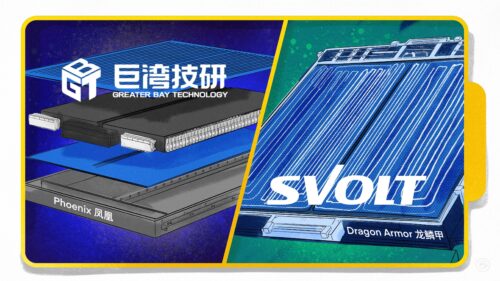China’s upstart phone giant Xiaomi enters electric car business — but will the Mi-mobile go?
Xiaomi is a much-loved mobile phone company, but it has never made a vehicle. Yet there’s reason to believe its $10 billion electric car plan might work.

On Wednesday, Xiaomi, the smart-appliance company sometimes called the “Apple of China,” and its CEO announced plans to invest more than $10 billion over the course of 10 years in electric cars.
The news sent shockwaves through China’s mediasphere. Although rumors about a Xiaomi car have circulated for months, and Xiaomi fans — who can be as passionate as Apple customers — are excited about the idea of a Mi-mobile, electric vehicles (EVs) are a risky move, given the fierce competition.
At the head of the pack is Tesla, which recently ramped up production in a new Shanghai factory. Hot on its tail are local EV manufacturers, including BYD, NIO, XPeng, and Li Auto. Behind them are traditional automakers — General Motors, Toyota, Volkswagen, and many others — who are all accelerating their electric plans.
It’s not just car companies: Internet giants such as Baidu and Tencent are partnering with automakers to integrate their mobile service apps into cars. Ecommerce giant Alibaba and the ride-hailing app Didi Chuxing also have their own partnerships.
Smart EVs
Yet charismatic CEO Léi Jūn 雷军, who plans to run the subsidiary, seems undaunted: “We have prepared to make full efforts for at least five to 10 years,” he said (in Chinese), calling the new business plan “the most significant decision in the company’s history.”
Xiaomi has two competitive advantages:
First, Xiaomi is flush with cash: At the end of 2020, the company had $15 billion in cash and cash equivalents, meaning it can afford high-risk, high-reward ventures, especially in an industry poised to become a $5 trillion market over the next decade. Existing players like NIO, by contrast, ended the third quarter last year with only $3.3 billion in cash and need to raise more to continue operating.
Second, Xiaomi already has EV tech. Lei Jun was among the earliest investors in NIO and Xpeng (in Chinese, as are most of the links below). Xiaomi has been building up a vast reservoir of intellectual property applicable to EVs for several years. Currently, the company owns 834 car-related patents in everything from wireless communication and data processing to driving control systems and navigation — all the features that comprise the “smart” element of the “smart EV.”
A smart EV is “an electronic device powered by an operating system that delivers a digital experience of mobility,” said Bill Russo, the CEO of Automobility in Shanghai. “That’s something that China’s doing that they actually have a leadership position in.” One Xiaomi invention, for example, helps detect driver fatigue by offering timely warnings to drowsy drivers. Another invention allows drivers to preheat their car before they reach it. Xiaomi’s patent portfolio offers answers to acute pain points in the driving experience, which can eventually translate into a competitive edge.
While Xiaomi may look inexperienced relative to other Chinese EV manufacturers, it may be just the opposite: The smartphone maker is likely closer to whatever the winning smart EV will look like a decade from now. Advanced electronic architecture is much harder to emulate than hardware. And in core competencies in appliance software and IoT, Xiaomi is well ahead of most EV manufacturers. According to the tech research firm PatSnap, the combined value of Xiaomi’s EV-related patents is estimated at $100 million — that’s half the value of Tesla’s, but more than five times the value of NIO’s.
Softened barriers to entry
When it comes to electric vehicles, old intuitions drawn from the fuel-based auto industry no longer apply. Internal combustion engines are complex mechanisms that need to be integrated into the whole of the car. Electric vehicles, by contrast, are less integrated, with companies specializing in specific parts that can be used as modules. Tech giants like Xiaomi, in other words, can simply buy their battery packs from the Tesla supplier CATL and their electric motors from the NIO supplier XPT, without the need to invest in new expertise.
Finally, barriers to entry are eroding for another reason. Several years of Chinese government support of “new energy vehicles” have undoubtedly informed Xiaomi’s decision. But recently, the government has gotten even more specific, with mandates to increase EV charging stations, battery-swapping facilities, and battery-recycling systems — see the recent work report following the “Two Sessions,” the annual policy meeting of the CCP, to get a sense of the urgency with which China is approaching its transition to an electric-powered economy. Bolstered by national policies and big institutional investors, the infrastructure for EVs will make it much easier for new entrants to join the competition.
Xiaomi’s late entrance may not be a disadvantage at all; it may just be the right time for the Mi-mobile to shine.







